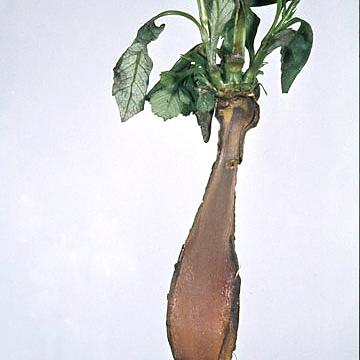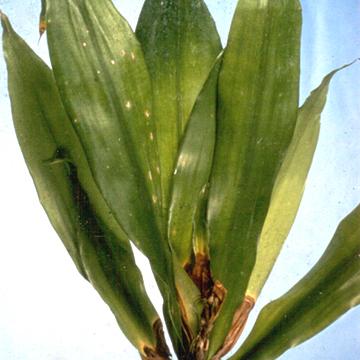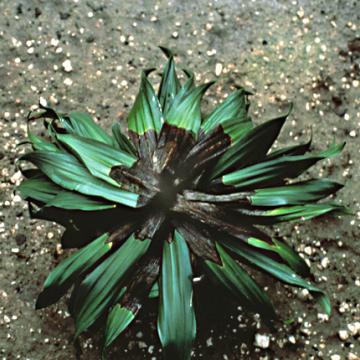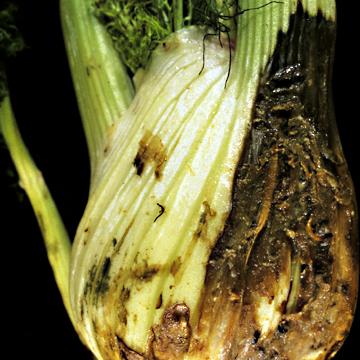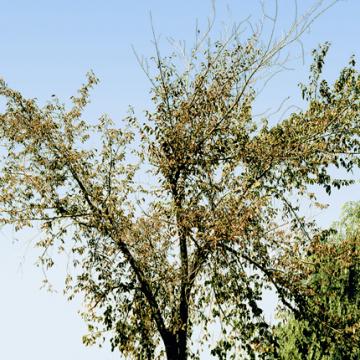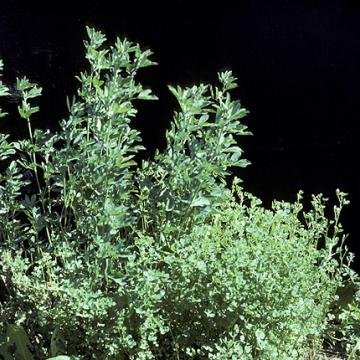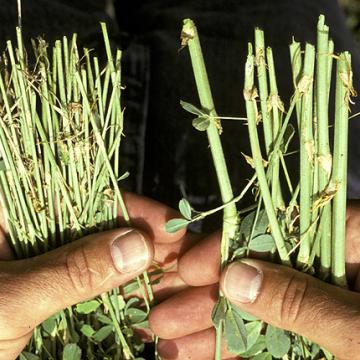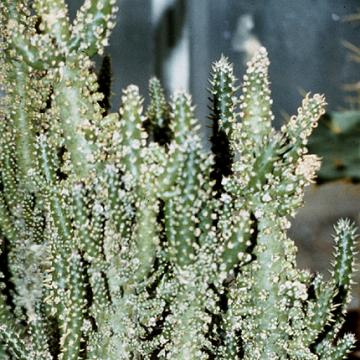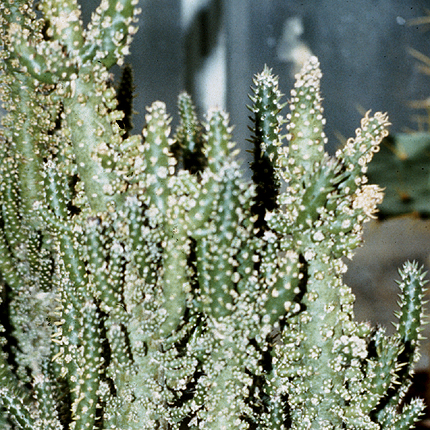DISEASE: Bacterial rot
HOST: Dahlia
Longitudinal section of dahlia with discolored, rotted tissues.
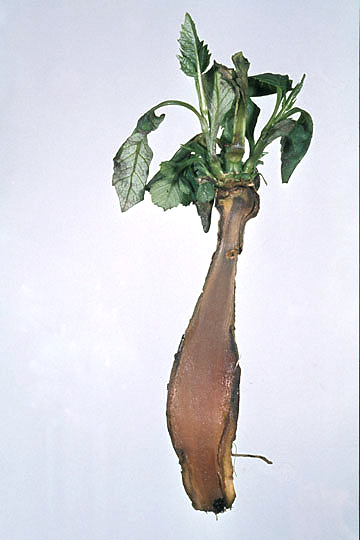
Bacterial rot | Dahlia
DISEASE: Bacterial rot
HOST: Dahlia (Dahlia sp.)
PATHOGEN: Dickeya sp.
PATHOGEN SYNONYM: Erwinia chrysanthemi
SOURCE: J. Young
DISEASE: Bacterial rot
HOST: Dracaena
Rot at base of leaves.
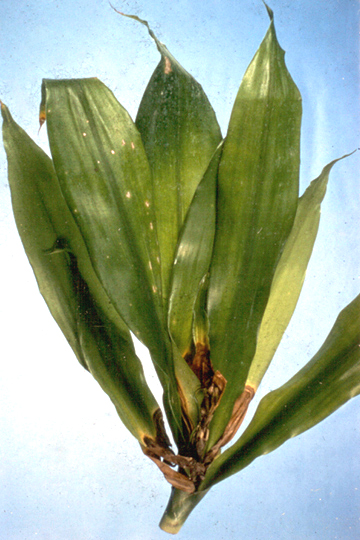
Bacterial rot | Dracaena
DISEASE: Bacterial rot
HOST: Dracaena (Dracaena deremensis)
PATHOGEN: Dickeya sp.
PATHOGEN SYNONYM: Erwinia chrysanthemi
SOURCE: A. Alvarez
DISEASE: Bacterial rot
HOST: Dracaena
Systemic rot throughout central stems.
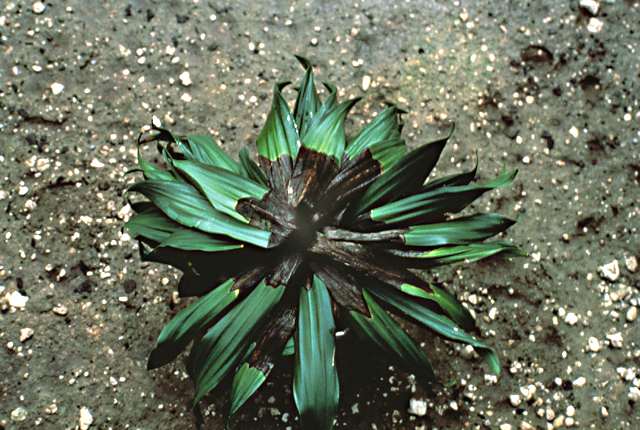
Bacterial rot | Dracaena
DISEASE: Bacterial rot
HOST: Dracaena (Dracaena deremensis)
PATHOGEN: Dickeya sp.
PATHOGEN SYNONYM: Erwinia chrysanthemi
SOURCE: A. Chase
DISEASE: Bacterial rot
HOST: Fennel
Soft rot of fennel.
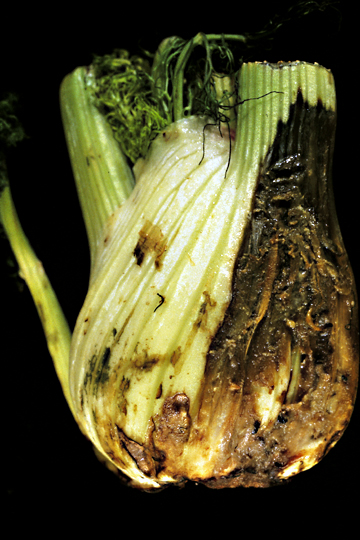
Bacterial rot | Fennel
DISEASE: Bacterial rot
HOST: Fennel (Foeniculum vulgare)
PATHOGEN: Dickeya sp.
PATHOGEN SYNONYM: Erwinia chrysanthemi
SOURCE: R. Davis
DISEASE: Elm leaf scorch
HOST: Elm
Diseased tree with scorch at leaf margins.
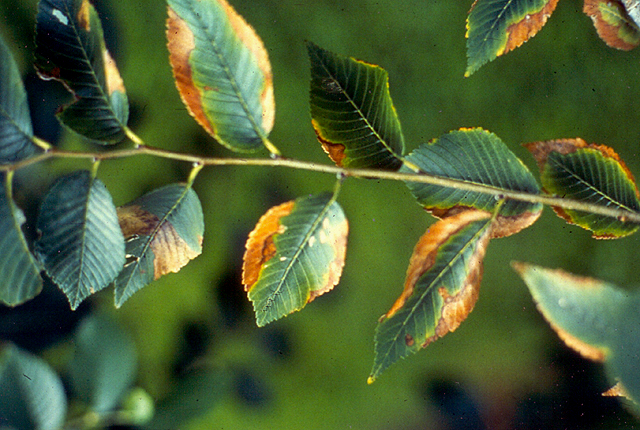
Elm leaf scorch | Elm
DISEASE: Elm leaf scorch
HOST: Elm (Ulmus americana)
PATHOGEN: Xylella fastidiosa
SOURCE: J. Sherald, M. Shurtleff
DISEASE: Elm leaf scorch
HOST: Elm
Severely diseased tree with dieback and scorched leaves.
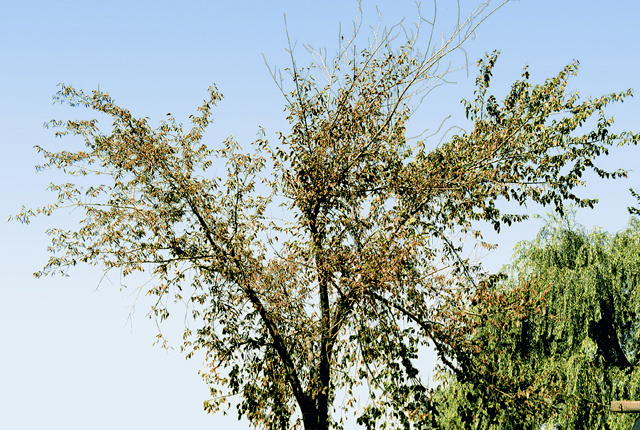
Elm leaf scorch | Elm
DISEASE: Elm leaf scorch
HOST: Elm (Ulmus americana)
PATHOGEN: Xylella fastidiosa
SOURCE: W. Sinclair
DISEASE: Witches'-broom
HOST: Alfalfa
Alfalfa plant (center) exhibiting stunting and proliferation of stems. Other symptoms are small, rounded, chlorotic, often puckered leaves and a yellowish cast.

Witches'-broom | Alfalfa
DISEASE: Witches'-broom
HOST: Alfalfa (Medicago sativa)
PATHOGEN: 'Candidatus Phytoplasma trifolii'
PATHOGEN SYNONYM: Phytoplasma Clover proliferation group
SOURCE: S. Thomson
DISEASE: Witches'-broom
HOST: Alfalfa
Young plant (left) with small, numerous stems (witches'-broom). Healthy stems (right).
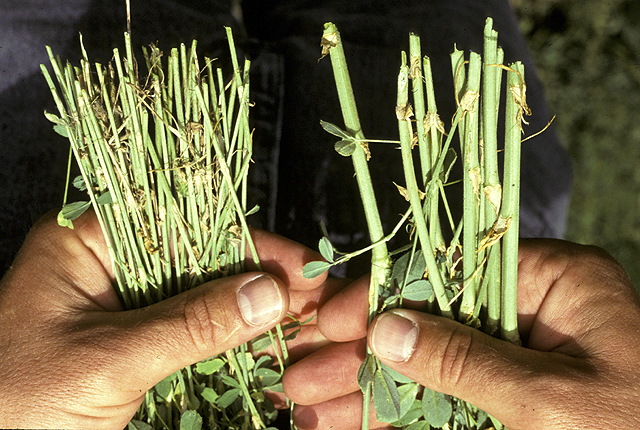
Witches'-broom | Alfalfa
DISEASE: Witches'-broom
HOST: Alfalfa (Medicago sativa)
PATHOGEN: 'Candidatus Phytoplasma trifolii'
PATHOGEN SYNONYM: Phytoplasma Clover proliferation group
SOURCE: S. Thomson


